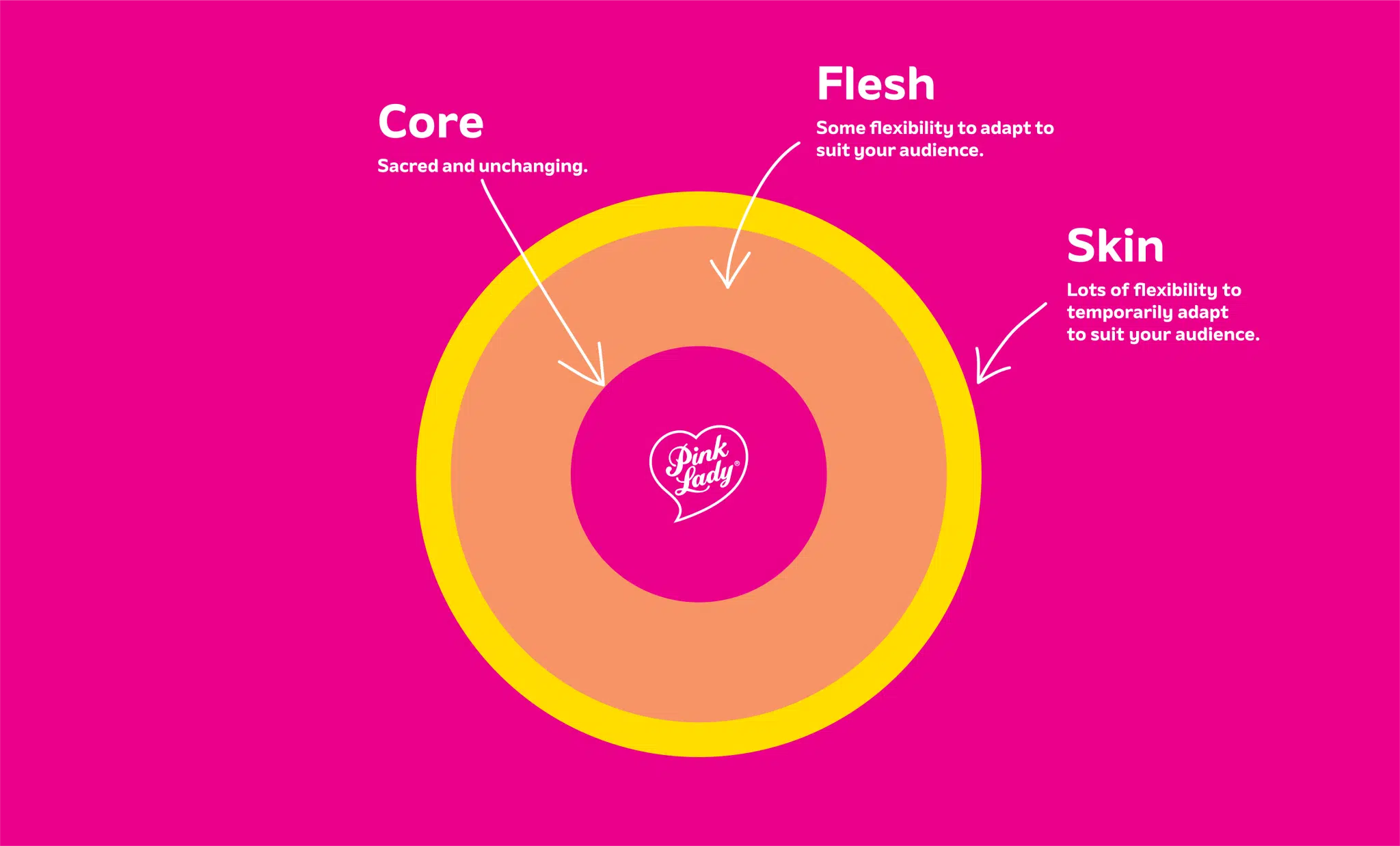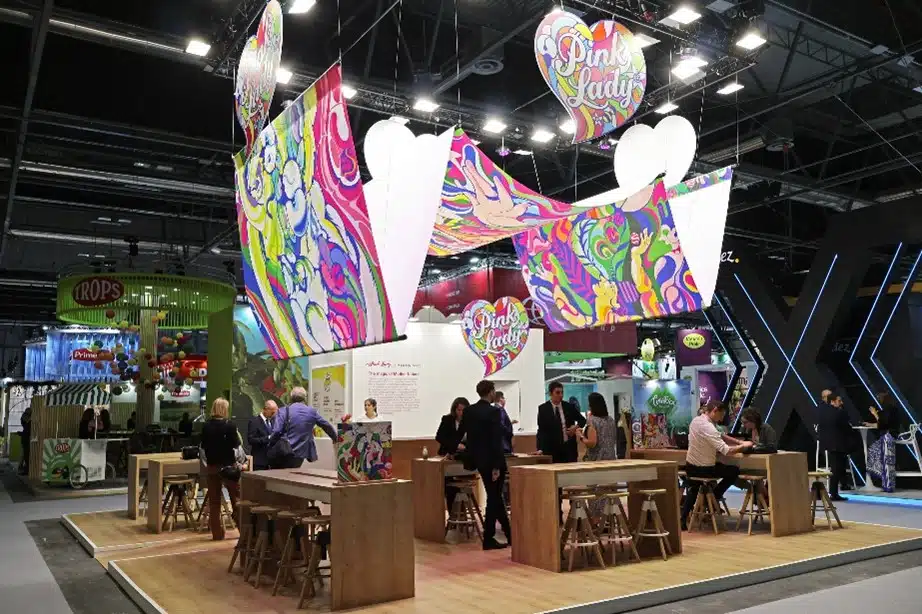New brand behaviours drive Pink Lady® brand update

At a time when all eyes are on companies to advance positive social and environmental change, a recent global study[1] has revealed that purpose-led brands deliver stronger reputational, brand loyalty and bottom-line results.
It is against this backdrop of shifting consumer expectations and strong market expansion, that the Global Brand Team undertook a review and refresh of the Pink Lady® brand architecture.
Chair of the Pink Lady Global Brand Team, Sophie Griffith, says: “Today, consumers want to know what Pink Lady® stands for and this is best demonstrated by how we behave as a brand.”
Representing a realignment of the Pink Lady® brand foundations, the initiative sought regional perspectives through a series of brand architecture workshops to acknowledge and define the distinction between the product (the Pink Lady® apple) and the brand behind the product.
APAL’s Head of Commercial Development, Craig Chester added: “As our network expands into new territories, so too does our ability to drive impact. It’s appropriate then that we pause and make a conscious decision about the values we want to advance as a brand, and then to put in place the structures and process that will drive alignment with that purpose globally.”
No change to Pink Lady® visual identity
In discussing the initiative, Sophie is quick to emphasise the distinction between visual brand identity and brand architecture: “Essentially brand architecture considers what makes us who we are, not what we look like.”
“Our focus has been to envision and articulate our purpose as a global brand, looking at elements such as values, how we behave and what we stand for. We want the Pink Lady® brand experience to feel the same, regardless of where in the world you are interacting with it.”
Sophie reiterates: “The logo, our colour pink and font – our visual branding – all remain unchanged.”
A global undertaking
Developed by the Global Brand Team in early 2021, next steps were to incorporate the newly defined brand behaviours into the Brand Guidelines, acknowledging the practical realities of using the brand in different markets.
Craig confirms local perspectives were critical for working through which brand elements need to be adopted universally, and which are best left to the regions to determine for themselves: “We need to provide sufficient flexibility for local marketers to bring the brand to life in ways that are relevant and compelling within their own cultural context,” he says.
The most fundamental update to the Guidelines is their extension to cover how Pink Lady behaves as a business, articulated via three brand pillars: Social Responsibility, Environmental Responsibility, and Celebrating Excellence.
Intended to encompass broader commitments than merely marketing activities, the pillars provide a guide for corporate initiatives in each region; from business systems and processes, to packaging and the charities we align with.
Simple, Accessible and Relevant
Beyond envisioning an aligned, global brand position, Sophie believes another benefit of the update has been to make the Guidelines more accessible, simple and relevant for key users.
Sophie states: “We acknowledge that each region has its own context and culture to work within. We want to provide a consistent brand experience globally, whilst allowing each region to tailor their marketing content to suit their audience, or to address their immediate marketing challenges.”
Using a simple apple-centric ‘core, skin and flesh’ model, marketers now have a high-level structure to help apply the Guidelines:

Core
Our brand’s ‘non-negotiables’ include the flowing heart device, our primary colour and our font. These are to be universally applied.
Flesh
Elements that provide some flexibility to suit regional audiences and contextual challenges. Examples include use of photography and space in design layouts, or secondary colour palette.
Skin
To be used sparingly and strategically, these elements help marketers address short term challenges without stepping away from what is immediately recognisable as Pink Lady®. Examples would include breakthrough campaigns such as those executed in the UK & SMSP markets.
Keep an eye out for…
As the updated Brand Guidelines are rolled out, members of the global Pink Lady network can find three high profile deliverables:
Brand Book
A hard copy Brand Book is being sent to each Master Licensee and Pink Lady Association to set the scene for the brand – both visually and for how we behave.
The Brand Book is suitable for sharing with people outside core Pink Lady® marketing teams and is also being circulated via PDF for ease of distribution.
PinkLadyApples.com
A new, publicly accessible www.PinkLadyApples.com website that showcases the Pink Lady® product and brand at a global level and provides a jumping off point to the regional websites, and the Pink Lady® Brand Hub.
Brand Hub
Accessible only to Licensees, Marketing Managers, Design Agencies and other approved stakeholders, Brand Hub is essentially an interactive Brand Guidelines site which hosts all of the brand information and assets that regional marketing managers and designers need to bring the brand to life in their region. Key sections within Brand Hub will be translated into French, Spanish, Chinese, Arabic, Thai, Vietnamese, Pidgin and Hindi, for ease of adoption across all markets.
For questions regarding the updated Brand Guidelines, or to request access to the Pink Lady® Brand Hub, please sign-up via brandhub.pinkladyapples.com **


